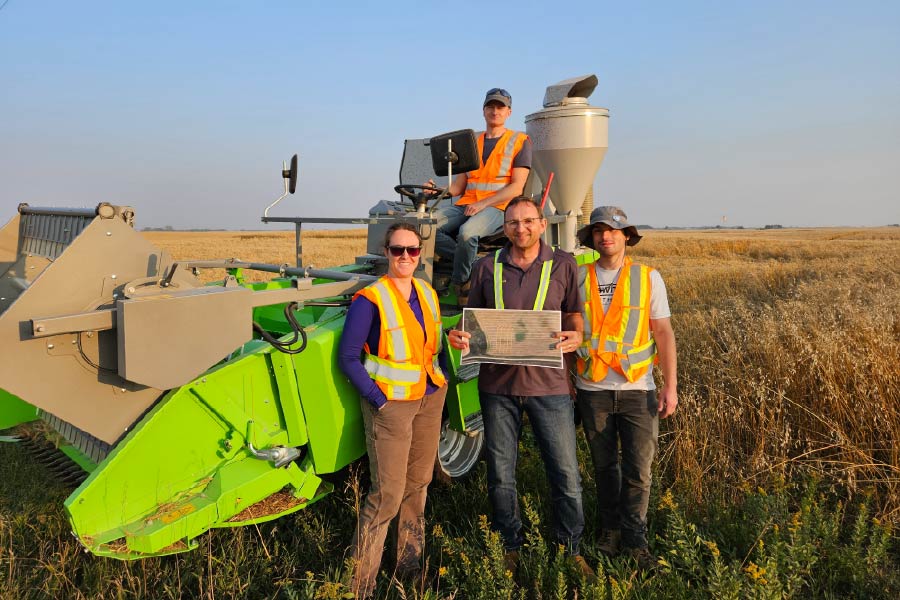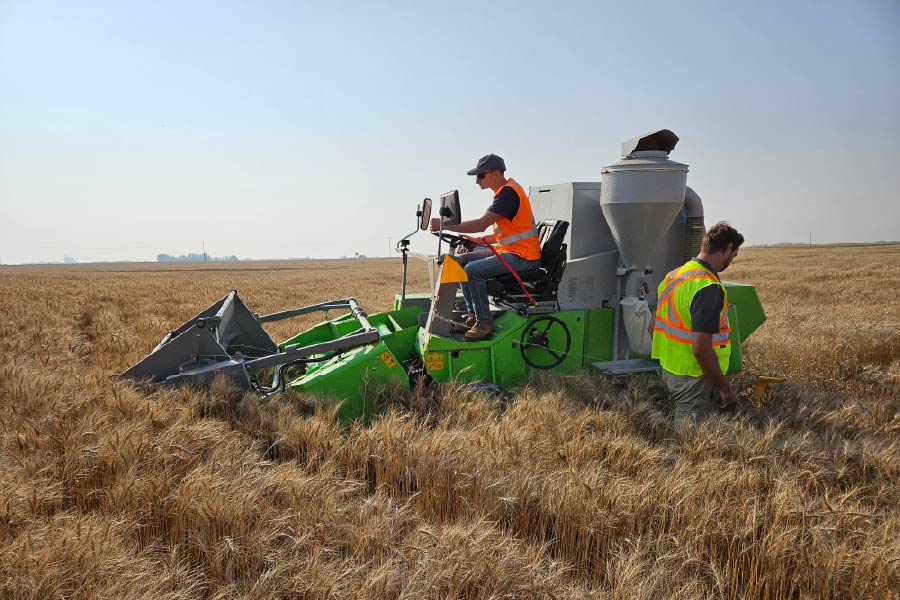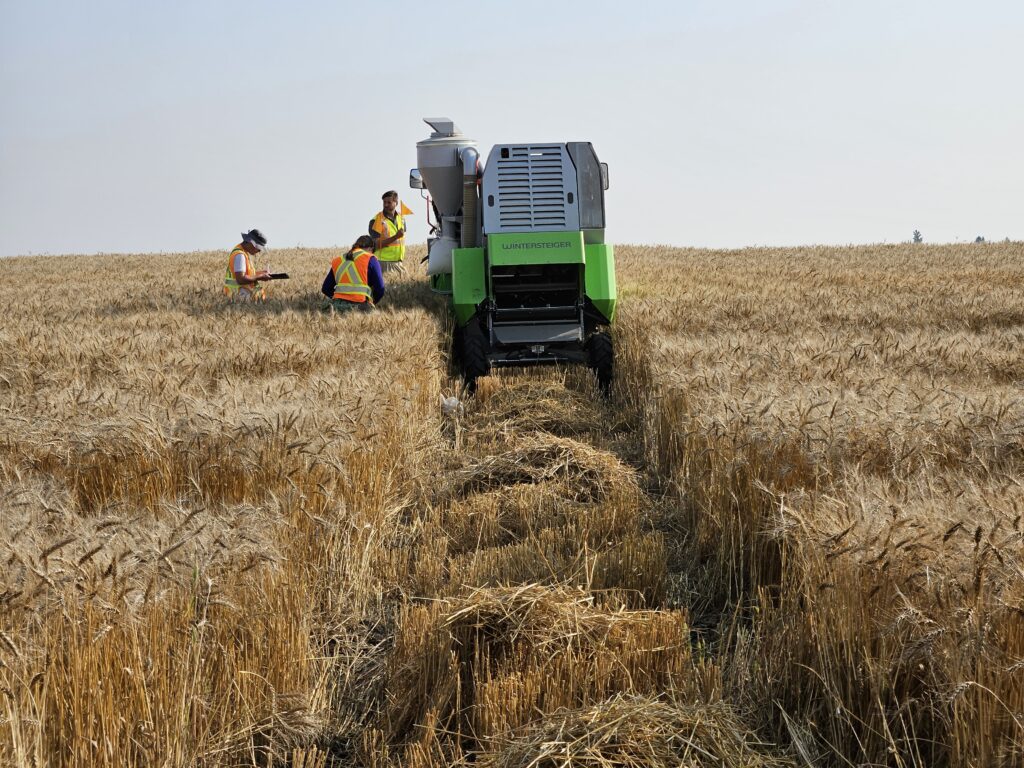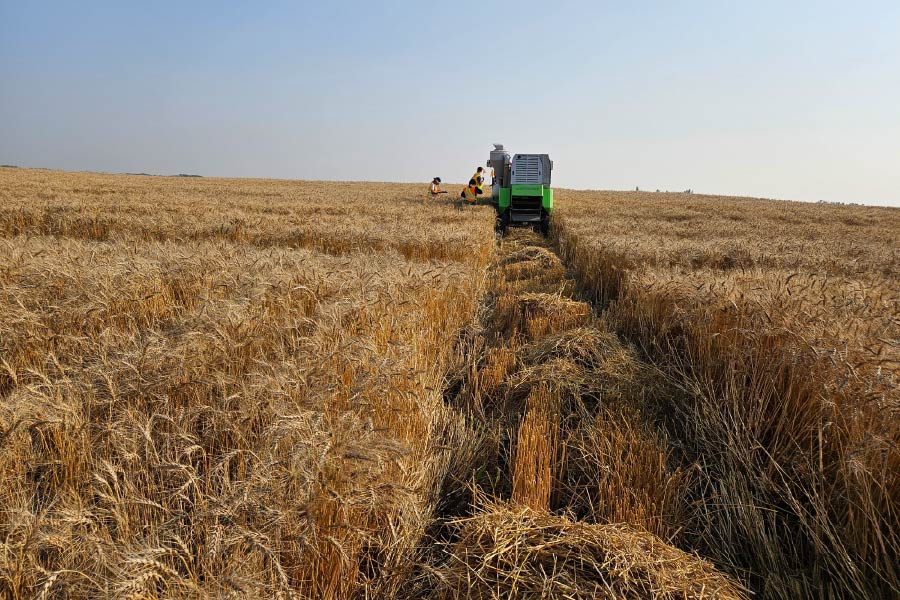WETLANDS RESEARCH OUTCOME IMMENSELY GRATIFYING FOR ALL INVOLVED.

In the wake of new precision agriculture technology, tried and true hypotheses can be validated, amended, and in some cases dismissed with the ability to collect increasingly accurate and accessible measurement. With on-board computers measuring inputs, coverage areas and yields in real time, the daunting task is no longer the collection of information, it’s the sifting, sorting and application of the data to prove or disprove long held premises about crop growth.
When it comes to wetland drainage in the Prairie Pothole Region (PPR), the equation has been that drainage increases arable land area and consequently has benefitted farms in all situations. The pothole wetlands have also provided nesting areas for birds and habitat for a variety of wildlife. Drainage over the years has had an impact on downstream ecology and land use, resulting in occasional disputes and negative agricultural and economic results.

Attempting to gather and use data from onsite testing and reporting, a team of agriculture specialists set out to determine the economic benefits of agricultural drainage in the PPR with an eye on the sensitivity to local and regional environmental spheres because of it. The result was a peer reviewed paper published in Agricultural Systems (January 2025). The article “Agronomic and economic effects of wetlands on crop yields using precision agriculture data” sets out to estimate the effects of wetlands and their buffer zones on crop yields, farm financial performance, and incentives for wetland drainage in the Prairie Pothole Region.

Gary Bergen, Technical Services Lead for PAMI, was one of the key contributors to the project. He detailed the painstaking analysis done to provide modelling for the outcome based on data collected by co-contributor Etienne Shupena-Soulodre from Saskatchewan’s Water Security Agency. For the two, the publication was the culmination of much investigation and process application to come up with a conclusion that has been sidestepped in other literature, but never directly documented. Not only was the publication of the findings a source of deep personal satisfaction for both partners, but it was also about the potential impact for producers in accurately assessing the benefits of drainage that provided a sense of pride. The paper marked a critical contribution to raw science, applied agronomics and financial considerations for producers moving forward.
Gary’s role was to apply the methodology and perform the analysis on the mountains of available precision agricultural yield data. That data was provided by farmers and by associates from equipment and technology providers in the ag industry. Etienne was tasked with collecting additional information from farmers on their drainage practices, seeding records, and other pertinent information.
“While we were anticipating some outcomes, we were wondering what the magnitude of a given effect was. I would say our ‘A HA’ moment was getting that key insight – recognizing that wetland yield effects significantly increase the profit from drainage.”
More to the point, Bergen said that to pinpoint an exact dollar benefit for the farmer for a soil type and crop detail within a defined buffer zone was a clear “bell ringer.”
It takes little imagination to understand that an increased acreage with land recovered by drainage would mean more money for farmers. What piqued the curiosity of researcher Etienne Shupena-Soulodre was the impact in the buffer zone – the 50 metre perimeter around the drainage area.
“What’s unique in this study is that we look at the ‘bathtub ring’ of an area around wetlands where they lose some crop. This can be due to salinity; this can be flooding. It’s potentially a number of things. What the study was able to show was how important that gain is in the buffer zone around the wetland when you drain. That’s unique – we really didn’t find evidence of that published anywhere before.”
The groundbreaking nature of the findings pushed the boundaries of understanding wetlands recovery in crop production and began to put a precise indication of economic value critical for production increase. Add to that the consistency of the effect across various crops, from cereals to peas and their sensitivity to moisture, and the research team saw the latitude of the application for farmers.
In addition to the findings on buffer zone production, the study looked at efficiencies that drainage provided to distances covered during seeding, spraying and harvesting. These findings could potentially lead to reductions in input costs caused by excessive overlapping. Again, the hard targeted numbers validated some practices, while also bringing the costs into more specific relief.
Bergen cautions that the nature of working with large data sets and with information that may be dependent on singular instances of weather, soil makeup, and yield variation can leave some conclusions open to interpretation. The victory, Bergen says, is in the development of a methodology that allows a way of using the data to draw consistent conclusions, as accurate as they can be given the chaos of variable effects. While Bergen is excited about the findings, he’s also aware that there is more to be done.
“The research applies to the area we were in, as far as the characteristics of the potholes and soil types, but we have to be careful about applying that too broadly. I would expect there are similar trends, but there’s a need to take things further.”
The ability to continuously gather new data and apply sound methodologies for interpretation has evolved and will continue to do so with the publication of the work. Shupena-Soulodre recalls his early days of gaining an understanding about drainage and its impacts.

One of the first landowners who ushered Shupena-Soulodre into an understanding about the importance of drainage practices was Rick Poirier who farmed near Bellegarde in the province’s southeast.
“He took me around when I was fresh out of school, and he showed me how they drained and why. What was interesting was such even production across the field where they’d done the drainage. I remember at the time, there was something really important here, but we couldn’t quite demonstrate it in the data.”
Because none of the scientific literature at the time was able to reflect what Poirier and Shupena-Soulodre were seeing, they couldn’t pin down a specific economic impact beyond the sense of improved yield and similar qualities. Etienne admits that it has taken a long time for data collection to have become advanced enough for Bergen’s methodology to take hold and clarify the effects Rick Poirier had shown through observation years earlier.
“What I actually feel is a sense of completion and gratitude that Rick was able to show me something so important, and almost 20 years later, we’re able to document that because the new technology and modernization of the ag industry are able to demonstrate this thing that Rick knew all along.”
There’s a sense of circular closure which is immensely satisfying, admits Etienne. However, like Bergen, he knows that the science will lead to more questions and more innovative approaches to different regions and situations. Making connections with producers like Rick Poirier and sharing the findings with them is also immensely gratifying, Shupena-Soulodre says.
While the weight of the research leans toward quantifying the economic benefits of land drainage for farmers, that’s not to say that the need for retaining wetlands for ecological interests has been lost. Putting more precise values for farmers considering drainage adds incentive, but it also allows a clear frame of reference when it comes to making decisions about preserving wetlands.
Bergen says one of the key findings was to negate the idea that yields from drained wetland areas would be uniform with the rest of the field. There were yield increases within the buffer zone of the wetlands demonstrated, but lower yields in the pothole areas themselves were consistently demonstrated. Those numbers are critical in weighing the balance for producers and policy makers striving for balance between economics and ecology.
“I don’t want to imply that we should just go ahead and drain everything because there’s economic benefit, but we need those facts in place if we are going to address the broader issues. When we put the data and statistics to work, and we are open and honest about it, and its peer reviewed, we have numbers that don’t have a political agenda.”

“Trying to work with government and stakeholders from a variety of sides and trying to come up with good approaches that satisfy everyone’s interests is complex. There are tradeoffs. However, having a good understanding of those tradeoffs, say in terms of economics, you explore what gains or efficiencies are made, is really important for these conversations. Once you have people working from a common set of facts, then they can really work together to find solutions.”
With unproven suppositions gone, and with data and formulas that can be applied to a broadening band of geographic regions and topographical scenarios, solid conclusions are possible for that wide range of stakeholders. The resulting paper also comes with an approval stamp from a broad cross-section of experts and institutions. The publication of the research was accomplished with the cooperation of the University of Saskatchewan, University of Alberta, the Water Security Agency and PAMI.
In the final analysis, the payoff will continue to unfold. For both Bergen and Shupena-Soulodre, whose hearts and souls have gone into the data gathering and uncovering revelations through novel processes, the satisfaction has been immense. That is the approach that PAMI, the WSA and scientific researchers put into the work, a burgeoning curiosity and an eye to the potential outcome for new applications.
“My colleagues at PAMI and myself, with the WSA, we tend to work in the applied space a lot,” Etienne explains. “We work with landowners and industry with policies or technical issues. For us to have produced a piece of work that’s significant enough for partnered academics, like Patrick Lloyd-Smith (of USask) to seek to work with us, it really hits home how important this work is, how much it clarifies.”
Those feelings are about intrinsic motivation and a sense of “mission accomplished” for the collaborators. However, the beat goes on as the ripples from the project have just begun. PAMI has presented the findings at several major water management and engineering conferences already. The modeling will continue to be applied in more geographic areas, with more crop varieties, and with precise economic outcomes driving conservation incentives. The platform has been built; now the arching applications and stacking benefits will take shape through time.

